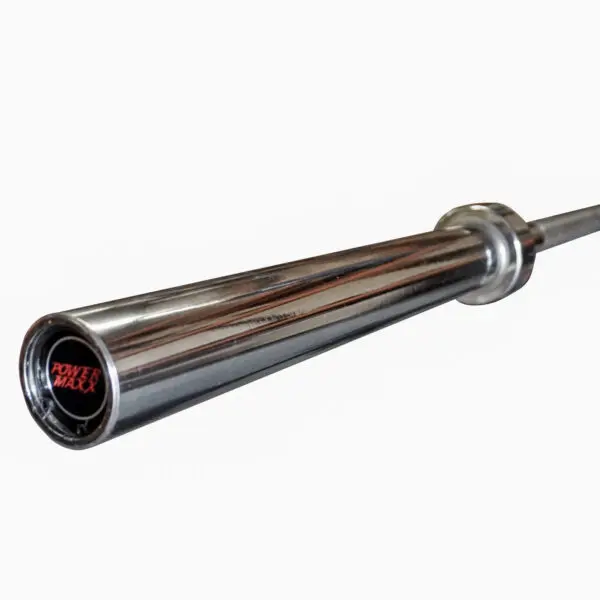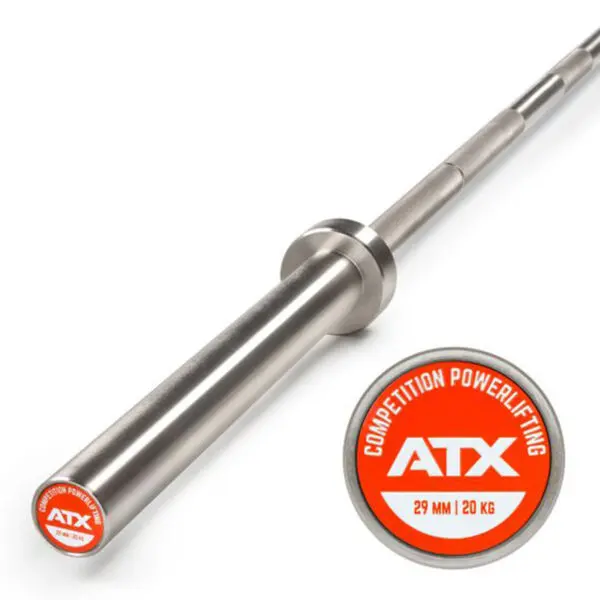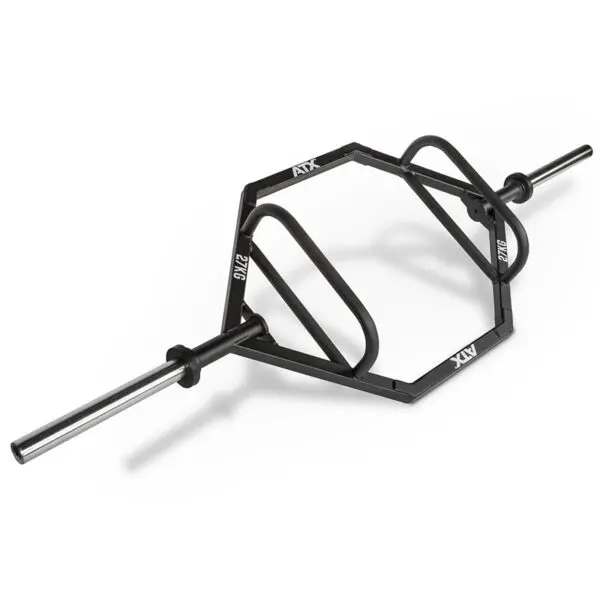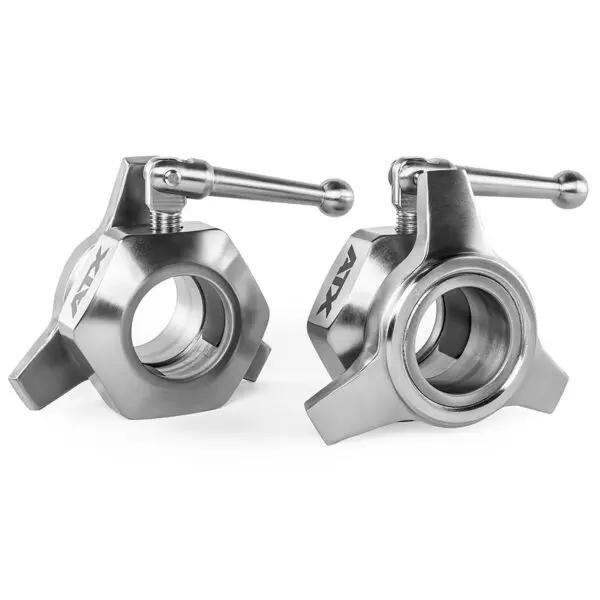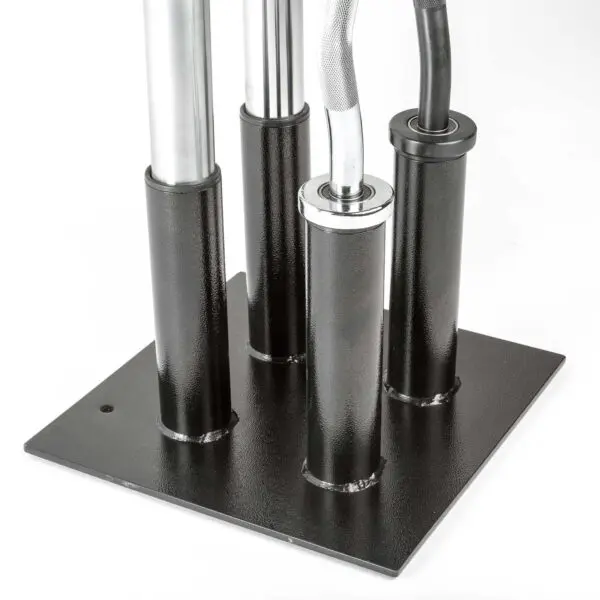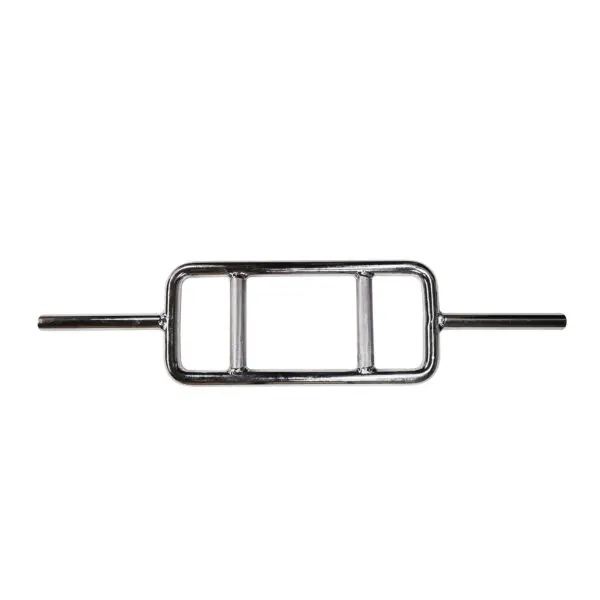Barbells
Stimulate Strength & Muscle Gains with the Right Barbell
Whether you are just starting out or have been training for years at a competitive level, there is a barbell that will suit you and boost your training. The number of exercises you can perform with a barbell is remarkable.
While there are many pieces of highly functional gym equipment, what makes the barbell stand out is the quality of the workout you’ll get. Given their cost in relation to the functionality they offer, a barbell is one of the best investments you can make for your gym. They are also very easy to store when not in use, making them a must-have for even the most compact gym.
Key Benefits of Barbells:
- Versatility: Perform a wide range of exercises.
- Cost-Effective: Great value for the functionality provided.
- Space-Saving: Easy to store when not in use.
Benefits
-
Robust construction
-
Heavy load capacity
-
Ergonomic handles
-
Functional bars
-
Great prices
What Makes a Barbell So Good?
The barbell is probably the most recognisable piece of strength equipment by the general public, especially given their use in Olympic weight lifting. They’re found in all commercial gyms as they’re used for a wide variety of exercises. This is the reason why I believe they are so important and why I could train with just a barbell, forever!
A barbell is ideal for compound exercises like the bench press, squats, deadlifts, and rows. Compound exercises involve movements that require the activation of multiple muscle groups to stimulate strength and muscle gains.
Barbell – a Piece of Gym Equipment that Stands out from the Pack
Give me a barbell and some weight plates and I could train forever. You will often hear me say this when customers share a horror story about their experiences at the crowded local gym. After years of training by myself, I could not return to such an environment and I would be perfectly happy with just a barbell as my only piece of gym equipment. This shows you how important a barbell is to your gym.
Different Types of Barbells
The Barbell Evolution
There are many different types of barbells and they are constantly evolving.
The most common type of barbell is the straight bar – the one that they use in the Olympics. The barbells that they use in the Olympics are 7ft long and have extra-long sleeves that are used to load on weight plates. These 7ft barbells are also used on power cages, squat racks and bench presses.
Straight bars range in size from 7ft down to 4ft. The shorter barbells are used for exercises or gym settings where the 7ft barbell is just too long. Imagine the havoc that could be caused by someone blissfully curling away with a barbell that is over 2 metres long with their headphones on in a crowded gym. The 7ft barbells are approximately 20kgs, so this is pretty heavy for an inexperienced trainer for certain exercises. Getting a shorter/lighter bar will make performing these exercises much easier.
Over the history of weight training, the barbell has evolved into some very interesting styles and shapes. Some barbells had some slight modifications to adapt to certain exercises. The most common that springs to mind is the EZ Curl Bar, which is essentially a short, straight bar with some bends. The bends are designed to make doing bicep curls easier – hence the name.
Barbell Design
There have also been some dramatic barbell designs. The hex trap barbell was designed to transfer the load from the front of your body to the centre during your deadlifts. To achieve this, the bar sleeves are placed at the end of a hex shaped structure. This enables you to lift heavier weights, so the bar is braced accordingly, making this bar look far removed from the original straight bar design.
This barbell evolution means there are now special bars for most of the major muscle groups.
Barbell Specifics – How they Differ
The other way you can classify barbells is by the sleeve diameter. Olympic bars are designed for Olympic weight plates. These have 50mm diameter internal holes. The other type is standard barbells which are designed for standard plates. These have 30mm holes.
Unless you already have loads of standard weight plates, I would strongly advise getting an Olympic barbell. Although they are a little more expensive, they do weigh more – so you will require less weight plates. This will partially offset the initial cost.
Most importantly, there is far more variety in the range of Olympic barbells, weight plates and gym equipment. Plus, the quality is generally better. Standard plates were very common in Australia years ago, but the industry has well and truly moved to Olympic.
Choosing a Barbell Brand
Barbell Basics
Your choice of barbell is made easy. If you are looking for a basic, quality and durable barbell then look no further than the Power Maxx range of barbells. Although the price we sell them for is very competitive, these are not cheap barbells in terms of quality. There are many gyms in Australia that have these bars as their durability comes in a price that is second to none.
Their spring steel shafts stand up to heavy training. The solid steel sleeves (as opposed to cast ones on cheaper bars) rotate on either copper bushings or bearings. The sleeves need to rotate on dynamic lifts to reduce the strain on your wrists and provide stability. Either sleeve rotation method utilised by the Power Maxx range has been proven to stand up to heavy training for years.
My trusty Power Maxx copper bushed Olympic bar has proven to be a workhorse for me for years so I can give them no better recommendation than this.
For those of you who compete in strength sports or take your training very seriously and don’t mind spoiling yourself, we have the ATX range of bars from Germany. They have taken the European market by storm.
Whether you are into power lifting, Olympic weightlifting, CrossFit or just a gym rat, you can choose one of their specialty 7ft barbells.
Barbell Finishes
Barbells offer a variety of finishes. Generally, barbells are finished in chrome as this is very durable. But some people prefer a black oxide finish. The oxide finish doesn’t have the same gloss as chrome so it offers a better grip. The downside is that the oxide finish will oxidise if you don’t maintain it. If you use chalk, just make sure you brush it after use with a nylon brush.
ATX also offers an ever-expanding range of specialty bars. High-performance athletes use safety squat bars and cambered squat bars to train their legs while reducing the strain on their other body parts which is often associated with straight bars. Cambered bench press bars and Swiss Bars are great for bench pressing even with shoulder injuries or to target different muscle groups
What Makes a Barbell So Good?
The barbell is probably the most recognisable piece of strength equipment by the general public, especially given their use in Olympic weight lifting. Add to this, they’re found in all commercial gyms as they’re used for a wide variety of exercises. This is the reason why I believe they are so important and why I could train with just a barbell, forever!
A barbell is ideal for compound movements like bench press, squats, deadlifts and rows. Compound exercises are movements that require the activation of multiple muscle groups which will stimulate strength and muscle gains.
A Piece of Gym Equipment that Stands out from the Pack
Give me a barbell and some weight plates and I could train forever. You will often hear me say this when customers share a horror story about their experiences at the crowded local gym. After years of training by myself, I could not return to such an environment and I would be perfectly happy with just a barbell as my only piece of gym equipment. This shows you how important a barbell is to your gym.
Different Types of Barbell
The Barbell Evolution
There are many different types of barbell and they are constantly evolving.
The most common type of barbell is the straight bar – the ones that they use in the Olympics. The barbells that they use in the Olympics are 7ft long and have extra-long sleeves that are used to load on weight plates. These 7ft barbells are also used on power cages, squat racks and bench presses.
Straight bars range in size from 7ft down to 4ft. The smaller barbells are used for exercises or gym settings where the 7ft barbell is too long. Imagine the havoc that could be caused by someone blissfully curling away with a bar that is over 2 metres long with their headphones on in a crowded gym. The 7ft barbells are approximately 20kgs, so this is pretty heavy for an inexperienced trainer for certain exercises. Getting a shorter/lighter bar will make performing these exercises much easier.
Over the history of weight training, the barbell has evolved into some very interesting styles and shapes. Sometimes the barbell has had some slight modification to adapt to certain exercises. The most common that springs to mind is the EZ Curl, which is an essentially a short, straight bar with some bends. The bends are designed to make biceps curls easier – hence the name.
Barbell Designs
There have also been some dramatic barbell designs. The hex trap barbell was designed to transfer the load from the front of the body to the centre during deadlifts. To achieve this, the bar sleeves are placed at the end of a hex-shaped structure. This enables you to lift heavier weights, so the bar is braced accordingly, making this bar look far removed from the original straight bar design.
This barbell evolution means there are now special bars for most of the major muscle groups.
Barbell Specifics – How they Differ
The other way you can classify barbells is by the sleeve diameter. Olympic bars are designed for Olympic weight plates. These have 50mm diameter internal holes. The other type are standard barbells which are designed for standard plates. These have 30mm holes.
Unless you already have loads of standard weight plates, I would strongly advise getting an Olympic barbell. Although they are a little more expensive, they do weigh more – so you will require less weight plates. This will partially offset the initial cost.
Most importantly, there is far more variety in the range of Olympic barbells, weight plates and gym equipment. Plus, the quality is generally better. Standard plates were very common in Australia years ago, but the industry has well and truly moved on to Olympic.
Choosing a Barbell Brand
Barbell Basics
Your choice of barbell is made easy. If you are looking for a basic, quality and durable barbell then look no further than the Power Maxx range of barbells. Although the price we sell them for is very competitive, these are not cheap barbells in terms of quality. There are many gyms in Australia that have these bars as their durability for the price is second to none.
Their spring steel shafts stand up to heavy training. The solid steel sleeves (as opposed to cast ones on cheaper bars) rotate on either copper bushings or bearings. The sleeves need to rotate on dynamic lifts to reduce the strain on the wrists and provide stability. Either sleeve rotation method utilised by the Power Maxx range has been proven to stand up to heavy training for years.
My trusty Power Maxx copper bushed Olympic bar has proven to be a workhorse for me for years – so I can give them no better recommendation than this. For those of you who compete in strength sports or just take your training very seriously and don’t mind spoiling yourself, we have the ATX range of bars from Germany. They have taken the European market by storm.
Whether you are into power lifting, Olympic weightlifting, crossfit or just a gym rat, you can choose one of their special 7ft barbells.
Barbell Finishes
These barbells offer a variety of finishes – generally barbells are finished in chrome as this is very durable. But some people prefer a black oxide finish. The oxide finish doesn’t have the same gloss as chrome so it offers a better grip. The downside is that the oxide finish will oxidise if you don’t maintain it. If you use chalk, just make sure you brush it after use with a nylon brush.
ATX also offers an ever-expanding range of specialty bars. High-performance athletes use safety squat bars and cambered squat bars to train their legs while reducing the strain on their other body parts that is often associated with straight bars. Cambered bench press bars and Swiss Bars are great for bench pressing with shoulder injuries or to target different muscle groups

 How much does a Barbell Weigh?
How much does a Barbell Weigh?
This will depend on the type of barbell. A typical 7ft Olympic barbell weighs 20kg. Powerlifting Barbell or Olympic Weightlifting Barbells used in competitions are 20kgs. Women’s bars are 15 kgs. These are two generally accepted standards.
However, there are many other varieties of barbells. Some are shorter, some are longer, and some come in different designs. The weight of these barbells is different. Unlike the competition barbells, there is no universally accepted specification for say an Olympic EZ curl bar.

 How long is a Barbell?
How long is a Barbell?
The type and brands of barbells grow each day. So, when we talk specifications, we need to pinpoint what type of barbell we are talking about.
Barbells that are used for Powerlifting and Olympic Weightlifting are 220cm. Women use a 200cm barbell. Generally, if someone says an “Olympic barbell” they are referring to 220cm (7ft) bar.
However there so many types of barbells. The lengths can vary widely.

 Are all Barbells the same Diameter?
Are all Barbells the same Diameter?
While there are barbells which are built to a certain specification, majority of the barbells available on the market feature different grip diameter.
Most common barbell diameters are:
1. Powerlifting Barbell – 29 mm grip diameter.
2. Olympic Weightlifting Barbell – 28 mm grip diameter.
3. Hybrid barbells – 28.5 mm grip diameter.
4. General Strength Training barbells – 30-32mm grip diameter.
5. Women’s Bars – 25 mm grip diameter.
6. Strongman/Fat Grip Barbells – 50 mm grip diameter.
7. Specialty Deadlift Barbell – 27 mm grip diameter.
8. Specialty Squat Barbell – 32 mm grip diameter
Specialty Barbell Grip Diameter (EZ Curl, Super Curl, Triceps Bar, Multi-Grip Bar) – grip diameter can range from 25 mm all the way up to 32 mm.
For powerlifting, bodybuilding, and general strength training, I would recommend choosing a barbell which has a diameter of 29-30 mm. Barbells with thinner grips will be whippier (has more flex). While barbells with THICKER SHAFTS can be more difficult to hold on to.

 How many Plates can you fit on a Barbell?
How many Plates can you fit on a Barbell?
There are hundreds of types of different weight plates and barbells. While some of them must conform to specific standards others are made for ease of use or looks.
The sleeve length of a 7ft Olympic Barbell can vary from 390 mm all the way up to 433 mm. Most people stack 20 kgs Olympic Weights on their barbell. This is how many weight plates you can fit on your barbell with an average sleeve length of 415 mm.
1. Cast Iron/Rubber Coated Plates – Our 20 kgs weight plates are 45 mm thick, which means that you can stack up to 9 x 20 kgs plates per side. This would equate to 380 kgs including the bar.
2. Bumper Plates – Our standard 20 kgs Bumper Plates are 80 mm thick, meaning that you can stack 5 x 20 kgs Bumper Plates on each site. This would equate to 220 kgs including the bar.
3. Competition Bumper Plates – Our competition bumper plates are 43 mm thick, meaning that you can stack up to 9 x 20 kgs plates either side. This would equate to 380 kgs including the bar.
4. IPF Powerlifting Weight Plates – Our thinnest 20 kgs Powerlifting Plates are 19.2 mm thick. Meaning that you can stack up to 21 x 20 kgs plates per side. This would equate to 860 kgs on the barbell. Or 920 kgs if you used 25 kgs weight plates on a barbell with 433 mm sleeves.
Sadly, outside of the standard bumper plates, these loaded weights will remain theoretical for most of us. Only people who write negative comments on fitness content on social media can handle these types of lifts.
It is important to note, that not every barbell is designed to handle that much weight. Some will deform and remain bent after loading them up with half of the weight. While others will start “vibrating” aka flexing making them too difficult to stabilize and use.

 How do you Clean Barbell Knurling?
How do you Clean Barbell Knurling?
During training, your skin particles and chalk get stuck in the knurling. This affects the grip as the particles fill valleys that create the friction for grip. The material also attributes to rust. The mixture of skin particles and chalk attract moisture which will deteriorate the bars knurling if left uncleaned.
Keeping a barbell fresh and clean does not take much effort. You can do that just by using a soft nylon bristle brush. Just brush the chalk/skin mix out of the bar after every single workout. If that is not adequate, then perform a deeper clean with barbell cleaning oil once every few weeks.
Why a soft nylon bristle? While steel bristles would clean the knurling up significantly faster, they would also take the barbells coating with the chalk. The last thing you want is to have your raw shaft exposed.

 How to clean Rust off Barbell?
How to clean Rust off Barbell?
Regardless of what sort of coating your barbell has, eventually it will start to develop surface rust. Some coatings do a better job than others, but eventually all of them fail if you drop the ball with maintenance.
To get rid of the surface rust, I would recommend using a soft nylon bristle brush and some barbell cleaning oil (you could also use WD-40 or a specialty rust removing solution from your local hardware store).
Avoid strong rust removing products like CLR as they can remove certain barbell coatings completely. These harsher agents will just expose more steel. This will end up making the rust return quicker than before.
The cleaning process itself is rather easy, apply some oil onto the barbell and use the brush to get rid of the rust. I’d recommend first putting the oil onto a piece of paper towel and then dabbing the areas you want to clean.
This way you will spilling the oil all over the floor.
If the rust is more advanced, I would recommend getting a new bar. Deep pits of rust will not only compromise the structural integrity of the barbell but can also lead to infections. It is simply not worth trying to squeeze out a few extra months of use from a barbell which is destined for the scrapyard.

